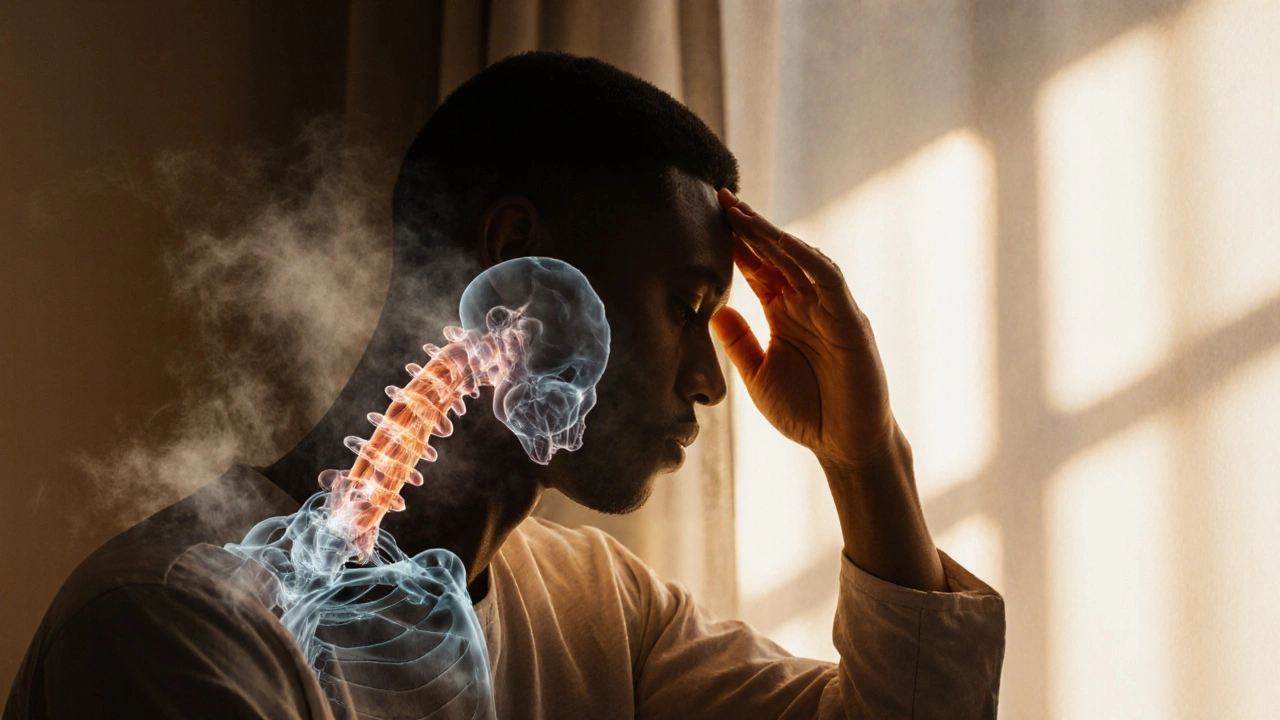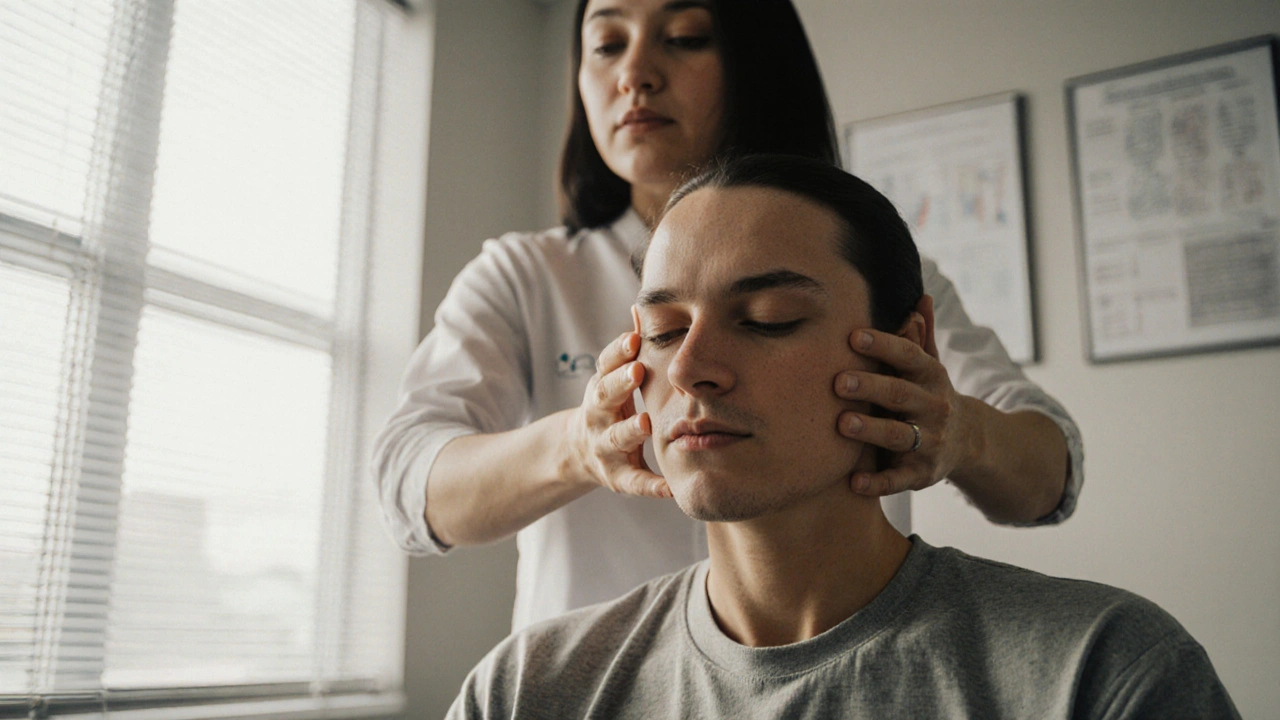Ever had one of those headaches that feels like someone’s drilling a hole through your skull with a rusty spoon? Yeah. That’s not just a bad day. That’s a migraine. And no, popping two paracetamol and hoping for the best isn’t a strategy-it’s a gamble. I’ve been there. More times than I care to admit. And here’s the truth most doctors won’t tell you: massage therapist work isn’t just for relaxation. It’s a damn weapon against migraines.
What is it, really?
A massage therapist isn’t some guy in a spa robe giving you a back rub while soft piano plays. No. This is clinical-grade muscle manipulation done by someone who’s studied anatomy like it’s a damn language. They know where your neck muscles are screaming for mercy. They know the exact spot behind your ear where the occipital nerve gets pinched. They know how tight your trapezius is from staring at screens all day-and how that tension travels up like a damn electric wire straight into your brain. This isn’t a luxury. It’s a neurological reset button.How to get it?
First, stop Googling "spa near me" and looking at photos of women in robes holding candles. That’s not what you need. You need a licensed massage therapist with experience in neuromuscular therapy or myofascial release. In London, you’ll find them in clinics, physio practices, even some wellness studios tucked away in Soho or Camden. Ask if they’ve worked with migraine patients. If they say "I do all kinds," run. If they say "I specialize in trigger point release for chronic headaches," stay. Book a 60-minute session. Not 30. Not 90. Sixty. That’s the sweet spot. Less than that and they’re just scratching the surface. More than that and you’re just paying for extra time they could’ve spent on someone else. Prices? Around £70-£90 in central London. Outside the zone? £55-£70. Compare that to a £150 ER visit for a migraine cocktail and a 4-hour wait. Or the £200/month you’re spending on triptans that make you feel like a zombie. This? This is an investment.Why it’s popular?
Because people are done being drugged into silence. The pharmaceutical route? It’s a treadmill. You take something, it works for a bit, then you need more. Then you get rebound headaches. Then you’re on preventive meds that make you gain weight, feel numb, or forget your own birthday. Meanwhile, your shoulders are still locked up like a vault. Massage therapy? No pills. No side effects. Just hands, pressure, and a deep understanding of how your body’s wiring got messed up. It’s the old-school fix that science finally caught up with. A 2023 study in the Journal of Bodywork and Movement Therapies found that patients who got weekly massage therapy for 8 weeks reduced their migraine frequency by 58%. Not 20%. 58%. And their pain intensity dropped by 42%. That’s not placebo. That’s physics.
Why it’s better?
Because it doesn’t mask the problem. It fixes the root. Painkillers? They’re like putting duct tape over a leaking pipe. The water’s still leaking. The pipe’s still rusting. Massage? It finds the kink in the pipe. It loosens the muscles in your neck that are pulling on your skull. It releases the fascia that’s stuck like dried glue around your C1-C2 vertebrae. It breaks up the trigger points in your levator scapulae that are screaming "HELP!" every time you turn your head. I’ve seen guys who swore they’d never get a massage-"I’m not some spa guy"-come back after one session, eyes wide, saying "I haven’t felt this clear in years." One guy, a project manager from Canary Wharf, told me he hadn’t slept without a headache in 14 months. After three sessions? He slept through the night. For the first time since his daughter was born. It’s not magic. It’s mechanics.What emotion will I get?
You’ll feel something you haven’t felt in a long time: relief. Not the kind that comes from a pill wearing off. The kind that comes from your body finally being heard. The first time your therapist presses into that knot behind your ear and you gasp-not from pain, but from release-you’ll feel it. Like a dam broke inside your skull. Your shoulders drop. Your jaw unclenches. Your breath gets deeper. You might even cry. Not because you’re weak. Because your body’s been holding onto this for months, maybe years, and someone finally touched it the right way. You’ll leave feeling lighter. Not just physically. Mentally. Like you’ve been carrying a backpack full of bricks and someone just took it off. You’ll notice things: the way sunlight hits your window, the sound of birds outside, the fact you can turn your head without wincing. Small things. But they’re the big things. And here’s the kicker: you’ll start to anticipate your migraines less. Because you know what to do. You don’t wait for the hammer to drop anymore. You go in before it hits. Every 2-3 weeks. Maintenance. Like oiling a machine. That’s the secret. It’s not about fixing the crisis. It’s about preventing it.
What to expect on your first visit
You’ll fill out a form. Questions about your headache patterns, triggers, sleep, stress. Don’t skip this. It’s not paperwork. It’s intel. They’ll ask you to sit or lie down. No nudity required. Just loose clothing. T-shirt and sweatpants. No suits. No ties. This isn’t a board meeting. They’ll start with your neck, shoulders, upper back. Then maybe your scalp. Yes, your scalp. That’s right. Gentle pressure on the temples, the crown, the base of the skull. It feels weird at first. Like someone’s tickling your brain. But then-it clicks. And you’ll wonder why no one told you this before. They’ll use their thumbs. Their knuckles. Maybe a tool. A little foam roller. They’ll tell you to breathe. Don’t hold it. Let it out. Slow. Deep. That’s when the magic happens. You’ll leave feeling tired. But good tired. Like you ran a marathon and won.Who should avoid this?
If you have a recent head injury, a brain tumor, or a bleeding disorder-talk to your doctor first. But if you’re just tired of living in a fog of pain? This is your lifeline. Don’t wait until you’re in full-blown crisis. Start now. One session. See what happens. If you feel even 20% better? Book the next. And the next. This isn’t a one-off. It’s a lifestyle upgrade. Your head doesn’t have to hurt every damn day. There’s another way. And it doesn’t come in a bottle. It comes from hands that know how to listen.Can massage therapy really stop migraines, or is it just temporary relief?
It’s not just temporary. Regular massage therapy reduces both the frequency and intensity of migraines by targeting the root cause-muscle tension and nerve compression. Studies show consistent weekly sessions over 8 weeks can cut migraine days by over half. It’s not a cure, but it’s the closest thing to a prevention plan that doesn’t involve pills.
How often should I see a massage therapist for migraines?
Start with once a week for 4-6 weeks. That’s when most people notice real change. After that, switch to every 2-3 weeks for maintenance. Think of it like brushing your teeth-you don’t wait until your gums bleed to do it.
What’s the difference between a massage therapist and a regular spa masseuse?
A spa masseuse focuses on relaxation. A licensed massage therapist trained in neuromuscular therapy knows anatomy, trigger points, and nerve pathways. They’re treating a medical condition, not giving a pamper session. Look for credentials like LMFT, RMT, or CMPT.
Can I do this at home with a foam roller or massage gun?
You can try, but you won’t get the same results. A professional knows where to apply pressure, how deep to go, and when to stop. Overdoing it with a massage gun can inflame nerves. A therapist reads your body’s feedback in real time. Home tools are for maintenance-not treatment.
Will insurance cover massage therapy for migraines?
In the UK, private health insurance sometimes covers it if prescribed by a GP or physio. NHS doesn’t. But it’s worth asking your provider. Even if you pay out-of-pocket, it’s cheaper than ER visits or long-term medication.
Next step? Book a session. Not tomorrow. Today. Your head will thank you.






